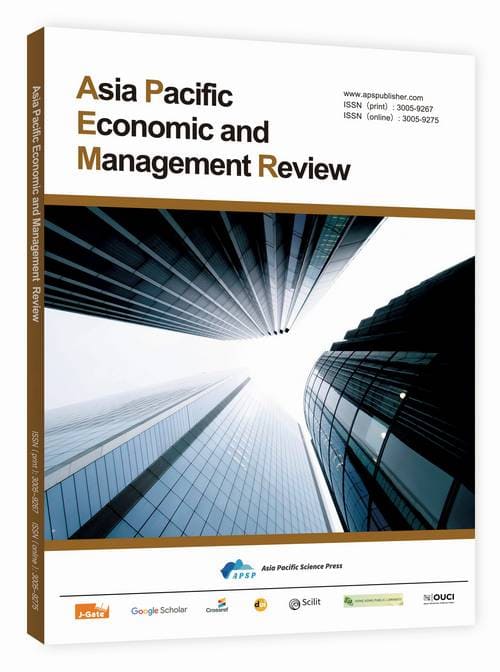Divergent Pathways of Artificial Intelligence Adoption in E-Commerce:
A Multidimensional Comparative Analysis of China, the United States, and the European Union
DOI:
https://doi.org/10.62177/apemr.v2i5.653Keywords:
Artificial Intelligence, E-Commerce, Comparative Analysis, TESR Framework, China, United States, European Union, Technology Adoption, Regulatory PolicyAbstract
The transformative impact of Artificial Intelligence (AI) on global e-commerce is shaped by profound regional disparities, yet comparative analyses remain limited. This study introduces a novel Technology-Economics-Society-Regulation (TESR) framework to systematically compare AI adoption pathways in e-commerce across China, the United States, and the European Union. Through a systematic literature review following PRISMA guidelines, analyzing 142 peer-reviewed studies from 2018–2023, we identify distinct regional paradigms. China’s platform-centric model leverages integrated ecosystems and vast data scale for operational efficiency and immersive engagement. The United States pursues a market-driven approach, emphasizing Software-as-a-Service solutions and personalization for competitive advantage. The European Union prioritizes a rights-based governance model, focusing on privacy, explainability, and ethical compliance. These divergent trajectories, driven by interdependent technological, economic, socio-cultural, and regulatory dynamics, challenge assumptions of global convergence in AI adoption. This research bridges a critical gap by providing a structured comparative framework, offering actionable insights for policymakers, practitioners, and researchers navigating the heterogeneous evolution of AI-powered e-commerce.
Downloads
References
Toader, D.-C. M., Boca, G., Toader, R., Măcelaru, M., Toader, C., Ighian, D., & Rădulescu, A. T. (2021). Artificial intelligence in e-commerce: A bibliometric study and literature review. Electronic Markets, 31(2), 221–242. https://doi.org/10.1007/s12525-020-00424-4
Zhang, S., Yao, L., Sun, A., & Tay, Y. (2019). Deep learning based recommender system: A survey and new perspectives. ACM Computing Surveys, 52(1), Article 5. https://doi.org/10.1145/3285029 DOI: https://doi.org/10.1145/3285029
Gartner. (2023). What's new in artificial intelligence from the 2023 Gartner Hype Cycle for artificial intelligence. https://www.gartner.com/en/articles/what-s-new-in-artificial-intelligence-from-the-2023-gartner-hype-cycle
Lee, K.-F. (2018). AI superpowers: China, Silicon Valley, and the new world order. Houghton Mifflin Harcourt.
Statista. (2023). E-commerce worldwide. https://www.statista.com/topics/871/online-shopping/
Bradford, A. (2020). The Brussels effect: How the European Union rules the world. Oxford University Press. DOI: https://doi.org/10.1093/oso/9780190088583.001.0001
Duan, Y., Edwards, J. S., & Dwivedi, Y. K. (2019). Artificial intelligence for decision making in the era of Big Data – evolution, challenges and research agenda. International Journal of Information Management, 48, 63–71. https://doi.org/10.1016/j.ijinfomgt.2019.01.021 DOI: https://doi.org/10.1016/j.ijinfomgt.2019.01.021
Page, M. J., McKenzie, J. E., Bossuyt, P. M., Boutron, I., Hoffmann, T. C., Mulrow, C. D., & Moher, D. (2021). The PRISMA 2020 statement: An updated guideline for reporting systematic reviews. BMJ, 372, Article n71. https://doi.org/10.1136/bmj.n71 DOI: https://doi.org/10.1136/bmj.n71
Wei, Y., & Lu, S. (2022). How live-streaming e-commerce is transformed by AI: A case study of Taobao Live. Journal of Consumer Behaviour, 21(5), 987–1001. https://doi.org/10.1002/cb.2056 DOI: https://doi.org/10.1002/cb.2056
Poushneh, A., & Vasquez-Parraga, A. Z. (2017). Discernible impact of augmented reality on retail customer's experience, satisfaction and willingness to buy. Journal of Retailing and Consumer Services, 34, 229–234. https://doi.org/10.1016/j.jretconser.2016.12.002 DOI: https://doi.org/10.1016/j.jretconser.2016.10.005
Bharadwaj, A., El Sawy, O. A., Pavlou, P. A., & Venkatraman, N. (2013). Digital business strategy: Toward a next generation of insights. MIS Quarterly, 37(2), 471–482. https://doi.org/10.25300/MISQ/2013/37.2.03 DOI: https://doi.org/10.25300/MISQ/2013/37:2.3
McKinsey & Company. (2023). The state of AI in 2023: Generative AI’s breakout year. https://www.mckinsey.com/capabilities/quantumblack/our-insights/the-state-of-ai-in-2023-generative-ais-breakout-year
Adadi, A., & Berrada, M. (2018). Peeking inside the black-box: A survey on explainable artificial intelligence (XAI). IEEE Access, 6, 52138–52160. https://doi.org/10.1109/ACCESS.2018.2870052 DOI: https://doi.org/10.1109/ACCESS.2018.2870052
European Commission. (2022). Digital economy and society index (DESI) 2022. https://digital-strategy.ec.europa.eu/en/library/digital-economy-and-society-index-desi-2022
Parker, G. G., Van Alstyne, M. W., & Choudary, S. P. (2016). Platform revolution: How networked markets are transforming the economy—And how to make them work for you. W. W. Norton & Company.
Mou, J., Shin, D.-H., & Cohen, J. (2020). Understanding trust and intention to use xAI-enabled services: The role of perceived risk. International Journal of Human-Computer Interaction, 36(14), 1329–1340. https://doi.org/10.1080/10447318.2020.1765438
Federal Trade Commission. (2024, May 15). FTC releases fiscal year 2023 annual report [Press release]. https://www.ftc.gov/news-events/news/press-releases/2024/05/ftc-releases-fiscal-year-2023-annual-report
Eurostat. (2023). Digital economy and society statistics - households and individuals. https://ec.europa.eu/eurostat/statistics-explained/index.php?title=Digital_economy_and_society_statistics_-_households_and_individuals
Hoofnagle, C. J., van der Sloot, B., & Borgesius, F. Z. (2019). The European Union general data protection regulation: What it is and what it means. Information & Communications Technology Law, 28(1), 65–98. https://doi.org/10.1080/13600834.2019.1573501 DOI: https://doi.org/10.1080/13600834.2019.1573501
State Council of the People's Republic of China. (2021). Outline of the 14th Five-Year Plan (2021-2025) for National Economic and Social Development and the 2035 Vision for a Modern Socialist Country. http://www.gov.cn/zhengce/2021-03/13/content_5592681.htm
National Conference of State Legislatures. (2023). Artificial intelligence 2023 legislation. https://www.ncsl.org/technology-and-communication/artificial-intelligence-2023-legislation
European Commission. (2024). Artificial Intelligence Act. https://artificialintelligenceact.eu/
Downloads
How to Cite
Issue
Section
License
Copyright (c) 2025 Fengyu Zhao

This work is licensed under a Creative Commons Attribution-NonCommercial 4.0 International License.
DATE
Accepted: 2025-09-29
Published: 2025-10-13
















